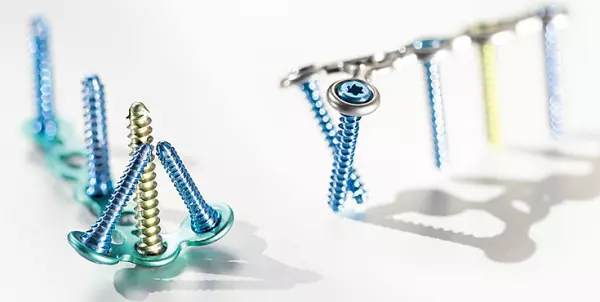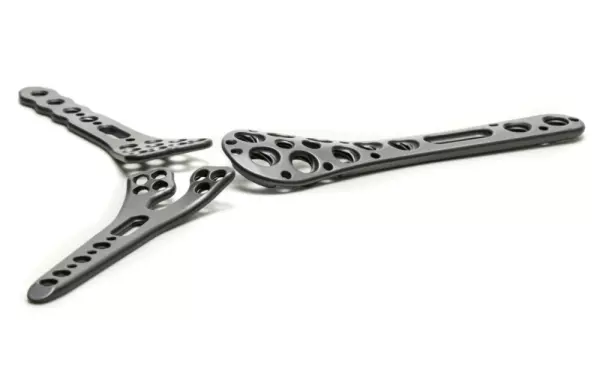
Implants and implant systems hand surgery
Implants and implant systems hand surgery We offer more than just standard solutions in the field...
Portal and digital medical technology fair of the largest MedTech cluster in Germany

Implants and implant systems hand surgery
Implants and implant systems hand surgery We offer more than just standard solutions in the field...

Titanium anodising type II dark anodising...
TYP-II titanium anodising - dark anodising for optimised surface properties TYP-II dark anodising...
 Finger joint implants, metacarpo-phalangeal implant, implant for metatarsus-phalanx, implant for interphalangeal joint
Finger joint implants, metacarpo-phalangeal implant, implant for metatarsus-phalanx, implant for interphalangeal joint In Hong Kong, clinical trials are underway to test custom finger joint implants. The procedure involves scanning a patient's hand and creating a 3D plastic model. The surgeon then uses this model to create a metal alloy implant, which is then fitted into the bone. The goal of these trials is to provide citizens with more appropriate implants for their individual needs. Depending on the type of joint implant that is needed, the procedure may take one to three hours.
Silicone implants have a low rate of complications, but have been used in high-risk patients for decades. The main problem with silicone implants is that they have an inherent high risk of fracture. They were often subjected to sharp bony edges and were eventually cracked. This meant that they were no longer safe. But silicone finger joint replacements have a low failure rate and continue to be a benchmark for the U.S. Food and Drug Administration.
The procedure is relatively straightforward. After the implant is placed, a surgeon makes an incision over the finger joint. Then, the tissue around the finger joint is spread apart. The artificial joint is then inserted into the joint cavity and works like a door hinge. The finger can bend and straighten thanks to its artificial joint. This procedure is also called a "finger-joint replacement" and requires only a few weeks of recovery time.
While finger joint replacement surgery is rare, it can significantly improve a patient's lifestyle. Compared with other surgeries, a finger implant resembles a miniature total knee replacement. It is inserted into the proximal interphalangeal joint, which is the key to making a fist. The process of putting in the implants takes a few weeks. The recovery period is generally three to six months.
After the procedure, the finger will be wrapped in a well-padded dressing and splint to provide support and alignment. The splint will hold the finger in a straight position during the healing process. Some patients are placed in an arm-length cast to help keep the joint in place. After five to seven days, the surgeon will examine the hand and remove the stitches. Most stitches will dissolve within ten to 14 days, but some patients may experience pain in the post-operative period.
There are several types of finger joint implants. The first of these is a semiconstrained implant. It is made of an ultrahigh-molecular polyethylene distal component and a cobalt chromium-molybdenum stem. It is designed to be inserted without cement. A pyrocarbon finger joint implant is the most popular type of implant available today. Once inserted, the implant can restore a patient's range of motion and relieve pain.
Become a digital exhibitor yourself in the online portal of the largest and best-known MedTech cluster region in Germany and inform the world of medical technology about your products and services as well as about news, events and career opportunities.
With an attractive online profile, we will help you to present yourself professionally on our portal as well as on Google and on social media.